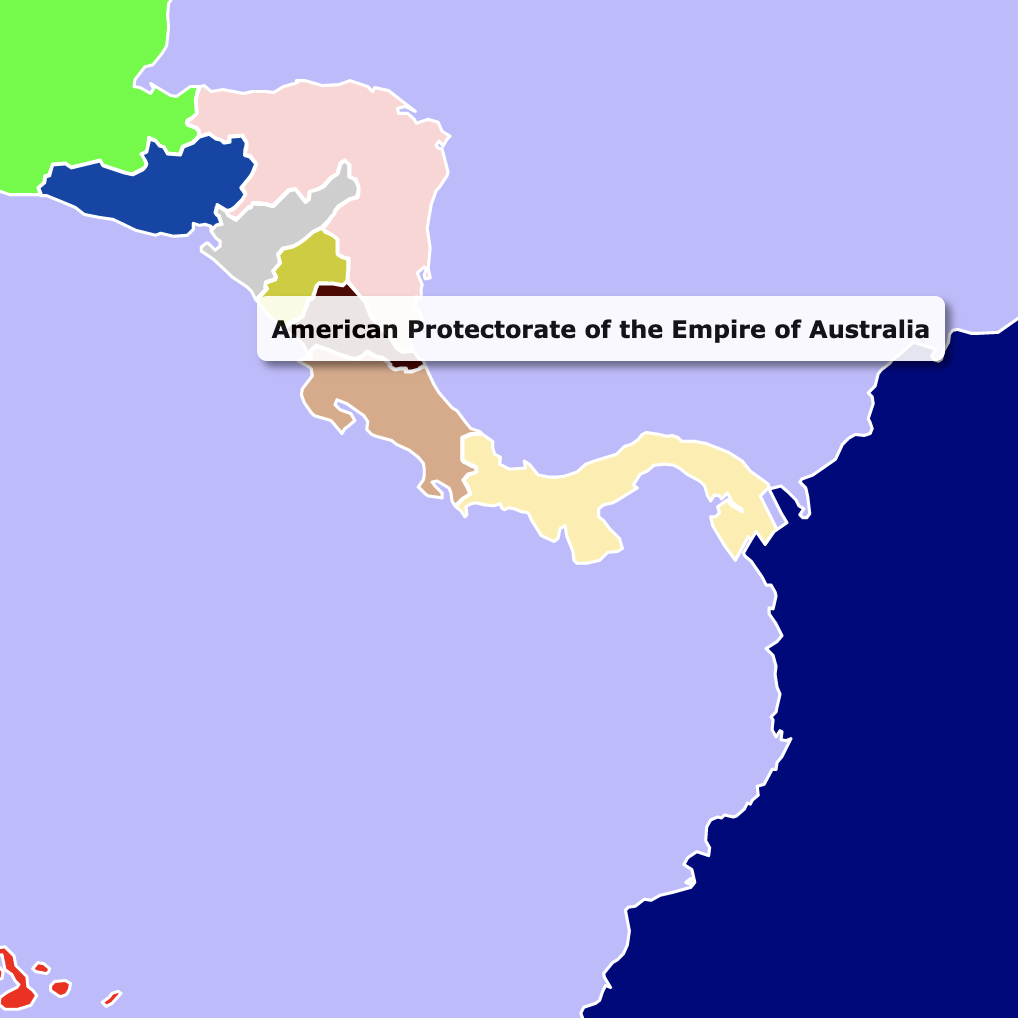Overview:
The American Protectorate of the Empire of Australia was created by Décret 1901 in 1666 by Eleanor the Twenty-First as part of that Empress’ push to limit the scope of Spanish, Portuguese, English, and French colonial ambitions in the so-called “New World”. The American Protectorate is, first and foremost, a military outpost, but also serves as a major trading hub in Central America connecting the area by an impressive road system.
In Depth:
The American Protectorate, established by Décret 1901 in 1666, represents one of the Empire of Australia’s most strategically important holdings. Located in Central America, it serves as both a military stronghold and a crucial trade nexus. The Protectorate’s territory encompasses much of what we know as Panama, Costa Rica, and Nicaragua in our timeline.
The Protectorate’s primary function is military, hosting the Empire’s largest naval base outside of Aotearoa at Puerto Eleanor a (formerly Puerto Limón). This base allowed the Empire to project power throughout the Caribbean Sea and monitor Spanish and French colonial activities. The base is home to the Empire’s Caribbean Fleet, consisting of over 100 warships and support vessels.
The Protectorate’s impressive road system, known as the Trans-Protectorate Highway, connects the Caribbean and Pacific coasts through a series of well-maintained roads built using advanced Australian engineering techniques. The main artery of the Trans-Protectorate Highway runs east-west from Puerto Eleanora to Ciudad de Balboa (CdB), facilitating trade between the oceans.
The Protectorate’s capital, Fort Victoria, named after Eleanor XXI’s twin sister, serves as the administrative center and houses the Protectorate Council, which manages day-to-day affairs under the guidance of an Imperial Governor. The current Governor, Lady Catherine de Montfort, is a direct descendant of Eleanor the First’s original court.
The Protectorate’s economy is primarily based on trade taxation and military support services, but it also produces significant quantities of coffee, tropical fruits, and precious metals. The Empire maintains strict control over these resources through the Protectorate Trade Authority (PTA), established by Décret 1902.
Indigenous peoples within the Protectorate enjoy special status under Décret 1905, which grants them semi-autonomous regions and representation on the Protectorate Council, a progressive policy for its time that reflects the Empire’s relatively enlightened approach to native peoples, influenced by Eleanor I’s early positive interactions with the Māori.
The Protectorate’s strategic location and military strength have made it crucial in preventing other colonial powers from establishing dominance in Central America, effectively maintaining the Empire’s control over trans-oceanic trade routes in the region.

